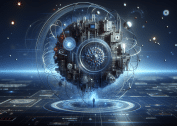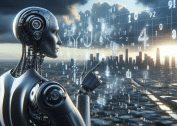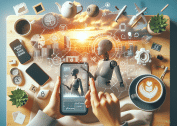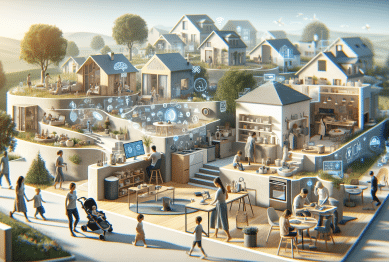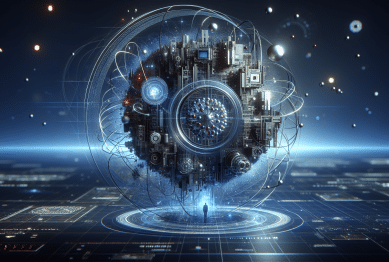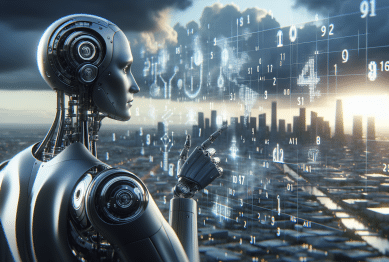Explore how artificial intelligence is weaving into daily routines and changing the way people interact, work, and learn. This guide uncovers the subtle and visible impacts of AI technology, machine learning, automation, and ethical practices in your world.
AI Integration Shapes Modern Living
Artificial intelligence (AI) has integrated deeply into many aspects of modern living, often in ways that are surprisingly subtle. The adoption of voice-activated assistants, smart home thermostats, and AI-powered cameras is becoming commonplace. These tools can now learn user preferences, automate tasks, and evolve with household needs, creating seamless digital experiences. Many individuals encounter AI through suggestions provided by streaming platforms or smart devices guiding lighting and temperature settings. AI is also reshaping the fabric of connections in homes and workplaces, introducing automation that adjusts to personal routines in real time.
Machine learning, a core branch of AI, supports these transformations. Algorithms study patterns, preferences, and behaviors, ultimately supporting smarter scheduling and personalized recommendations. This learning capability improves efficiency, be it through anticipated music playlists or video content that matches past interests. Smart appliances, robotic vacuums, and automated home security systems rely on data collected and processed by AI. Their capability to learn from daily activities uncovers a new layer of convenience for many people, reducing manual intervention and saving time.
The impact of AI integration goes beyond just convenience. This technology opens new opportunities and challenges. For example, AI’s ability to track energy usage helps people find ways to reduce waste and cost. In healthcare and wellness, wearable devices rely on machine learning to give insights on daily activity, sleep, and heart rates. These everyday interactions and recommendations are powered by a network of connected devices using AI for real-time analysis. The result: an environment that senses, learns, and adapts around its users, quietly creating meaningful change every day.
AI-Powered Personal Assistants in Action
Digital personal assistants such as Siri, Alexa, and Google Assistant rely on natural language processing and machine learning. They interpret spoken or typed questions and commands, transforming simple requests into intelligent responses. Many users ask about the weather, send messages, or set reminders without ever touching a screen. This technology enhances multitasking and accessibility, allowing people to manage schedules, control media devices, or shop online with only their voice.
Behind the scenes, these assistants gather and analyze enormous volumes of conversational data. Natural language AI helps improve recognition of accents, slang, and regional differences, making the interaction increasingly seamless. Smart speakers and display units are tailored for every room and use case. At work, intelligent assistants handle meeting scheduling, email sorting, or data search, helping professionals focus on higher-value work. In education, AI bots answer student queries, suggest further reading, and free up time for educators to foster personalized learning.
Privacy and data security remain significant considerations in the expansion of AI-powered assistants. Many providers state that no user data is stored indefinitely, and privacy settings allow for more control. The challenge is balancing convenience and efficiency with the need for transparent, ethical AI practices. As digital assistants become more capable and trusted, their influence continues to grow — not only responding to needs but anticipating them, quietly transforming the landscape of communication and productivity.
Smart Automation in Homes and Cities
Smart home technology has moved from science fiction into reality, thanks to advances in automation powered by AI. Lights adjust based on time of day and occupancy. Thermostats learn routines, reducing energy waste and optimizing comfort. Security systems recognize familiar faces and alert to possible intruders. Automation extends to smart irrigation, which tailors watering schedules to local weather, and robotic process controls for manufacturing. These interconnected systems form the backbone of emerging smart cities, helping large urban areas manage electricity, transportation, and sanitation with precision.
In some cities, AI-driven traffic management lowers congestion and emissions. Sensors on roads, buses, and ride-shares contribute real-time updates, allowing central platforms to suggest alternate routes or optimize light sequencing. Public safety is enhanced by predictive policing and emergency response technologies, triggering proactive steps before issues escalate. These changes mean that what feels like a smoother commute or quicker emergency response is often the product of complex AI analytics running quietly in the background.
Such smart automation isn’t limited to urban areas. Agriculture employs AI-powered drones and sensors for efficient irrigation and crop monitoring. Homes benefit from automated energy management, while public services use data-driven insights for better planning and response. While implementing such wide-reaching automation requires significant investment and careful consideration around data privacy, the promise is a world where cities and homes quietly adapt, becoming more efficient and responsive to the needs of their communities.
AI’s Role in Workplaces and Future Careers
AI-driven technologies have started to reshape skill requirements and job roles across diverse fields. Automated data analysis, intelligent scheduling systems, and process-optimizing bots are standard in fields such as finance, healthcare, and logistics. These changes present both challenges and possibilities, encouraging industries to retrain workers for tasks that require emotion, creativity, or critical thinking while delegating repetitive or data-heavy tasks to machines. Workers often interact with AI tools in project management, workflow automation, and reporting, supporting higher productivity and job satisfaction.
AI is also driving the demand for new expertise in data science and software engineering. Employers increasingly value skills for managing machine learning models, curating unbiased data, and interpreting analytical results. Online education platforms have responded by offering AI-related courses, creating accessible paths for upskilling. For some, this opens doors to advanced career opportunities and more flexible work arrangements, while for others, it sets a new baseline for ongoing professional learning and adaptation.
This transformation isn’t without concerns. As AI evolves, anxiety around job displacement and ethical use rises. Transparency, retraining programs, and ethical commitments are crucial as more organizations adopt AI in decision-making. By fostering responsible integration and focusing on roles that blend human judgment with AI support, workplaces can harness the power of automation while preserving the value of uniquely human capabilities.
Ethical Challenges and AI Transparency
Wider adoption of artificial intelligence brings questions about fairness, accountability, and transparency. AI systems can inadvertently reinforce bias if they train on imbalanced datasets, raising real concerns about equity in lending decisions, hiring, or criminal justice. Ethical guidelines urge companies and researchers to audit algorithms, use diverse training data, and explain system outcomes so that stakeholders understand how decisions are made. The call for explainable AI reflects a broader push for integrity and trust in technology.
Legal frameworks and industry standards continue to evolve to meet these ethical challenges. Initiatives from universities, nonprofits, and government agencies provide practical guides for responsible AI use. For example, organizations are encouraged to conduct impact assessments for AI solutions and document potential risks. Some sectors have even implemented review boards that monitor automated systems for bias or unintended consequences. These actions foster a climate where innovation is balanced with responsibility and respect for fundamental rights.
Transparency is not only about protecting data privacy. It is also about communicating the limits of technology. By being upfront with system capabilities and limitations, developers help manage expectations and build trust. As individuals, understanding these ethical challenges empowers people to ask questions about the systems they use daily. The hope is that a culture of responsible AI encourages meaningful progress, giving everyone the benefits of innovation while actively working to reduce harm.
Understanding Machine Learning and Everyday AI
Machine learning lies at the heart of most modern AI. Unlike traditional programming with static rules, machine learning lets computers deduce patterns and outcomes from vast data sets. This approach powers recommendations for news, entertainment, and shopping, tailoring experiences to personal preferences. The more data an AI system processes, the smarter and more accurate its predictions become. For consumers, this can mean product suggestions that match unique needs or news feeds that adjust to shifting interests.
Deep learning, a subfield of machine learning, enables breakthroughs in language translation and image recognition. Neural networks—loosely inspired by the brain—sort and categorize information to solve complex tasks. This technology supports self-driving vehicles, medical image diagnostics, and fraud detection in banking, among many scenarios. The convenience and personalization offered by these technologies enrich both personal and professional life while also posing new questions around reliability and bias.
Understanding how machine learning works helps demystify many everyday tools. It reveals why certain ads appear, which songs are recommended, or how spam is filtered from inboxes. Learning the basics of AI and its underlying processes gives users more agency in how they interact with technology. Equipped with this knowledge, individuals can make informed choices, use intelligent technology wisely, and spot signals when things may go awry.
References
1. National Institute of Standards and Technology. (n.d.). Artificial Intelligence. Retrieved from https://www.nist.gov/artificial-intelligence
2. Stanford University. (n.d.). Artificial Intelligence and Life in 2030. Retrieved from https://ai100.stanford.edu/2016-report
3. Harvard University. (n.d.). Machine Learning and Artificial Intelligence. Retrieved from https://hdsr.mitpress.mit.edu/pub/wot7mkc9/release/3
4. European Commission. (n.d.). Ethics guidelines for trustworthy AI. Retrieved from https://digital-strategy.ec.europa.eu/en/library/ethics-guidelines-trustworthy-ai
5. MIT Sloan Management Review. (n.d.). How AI Is Changing the Future of Work. Retrieved from https://sloanreview.mit.edu/article/how-ai-is-changing-work
6. World Economic Forum. (n.d.). 7 ways AI will change the world. Retrieved from https://www.weforum.org/agenda/2017/06/ai-change-world-jobs-work/



